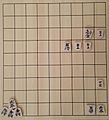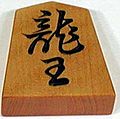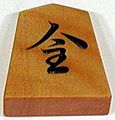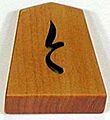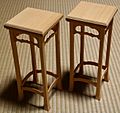Shogi facts for kids
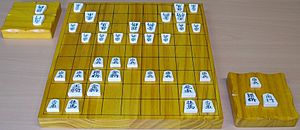
A game of shogi (Fortress opening)
|
|
| Genre(s) | Board game Abstract strategy game Mind sport |
|---|---|
| Players | 2 |
| Setup time | < 2 minutes |
| Playing time | 30 mins. to 2 hours (typically) |
| Random chance | None |
| Skill(s) required | Strategy, tactics |
| Synonym(s) | Japanese chess Game of Generals |
Shogi (将棋, shōgi, generals' chess) is also known as Japanese chess. It is a two-player board game in the same family as International chess, and Chinese Xiangqi. Shogi is the most popular of a family of chess variants, and is native to Japan. Shōgi means general's (shō) boardgame (gi). In early years, however, shogi was written 象棋 (the same as Xiangqi, "elephant chess").
The earliest predecessors of the game, chaturanga, originated in India in the 6th century AD, and spread from China to Japan, where it spawned a number of variants. Shogi in its present form was played as early as the 16th century, while a direct ancestor without the "drop rule" was recorded from 1210 in a historical document Nichūreki, which is an edited copy of Shōchūreki and Kaichūreki from the late Heian period (~1120).
According to ChessVariants.com, "Perhaps the enduring popularity of Shogi can be attributed to its 'drop rule'; it was the first chess variant wherein captured pieces could be returned to the board to be used as one's own. This has the consequence that few games are drawn, which is a weakness of international chess. David Pritchard credits the drop rule to the practice of 16th century mercenaries (ronin) who switched loyalties when captured—no doubt as an alternative to execution".
- For rules see en:Shogi
- History of chess
Images for kids
-
A traditional shōgi ban (shogi board) displaying a set of koma (pieces). The pieces on the far side are turned to show their promoted values. The stands on either side are komadai used to hold captured pieces. The board itself is raised for the comfort of players seated on tatami mats (background), and is hollowed underneath to produce a pleasing sound when the pieces are moved.
-
Two men playing shogi outside in Ueno Park, 2014
-
2013 World Shogi Open Championship (amateur) tournament in Minsk
See also
 In Spanish: Shōgi para niños
In Spanish: Shōgi para niños




